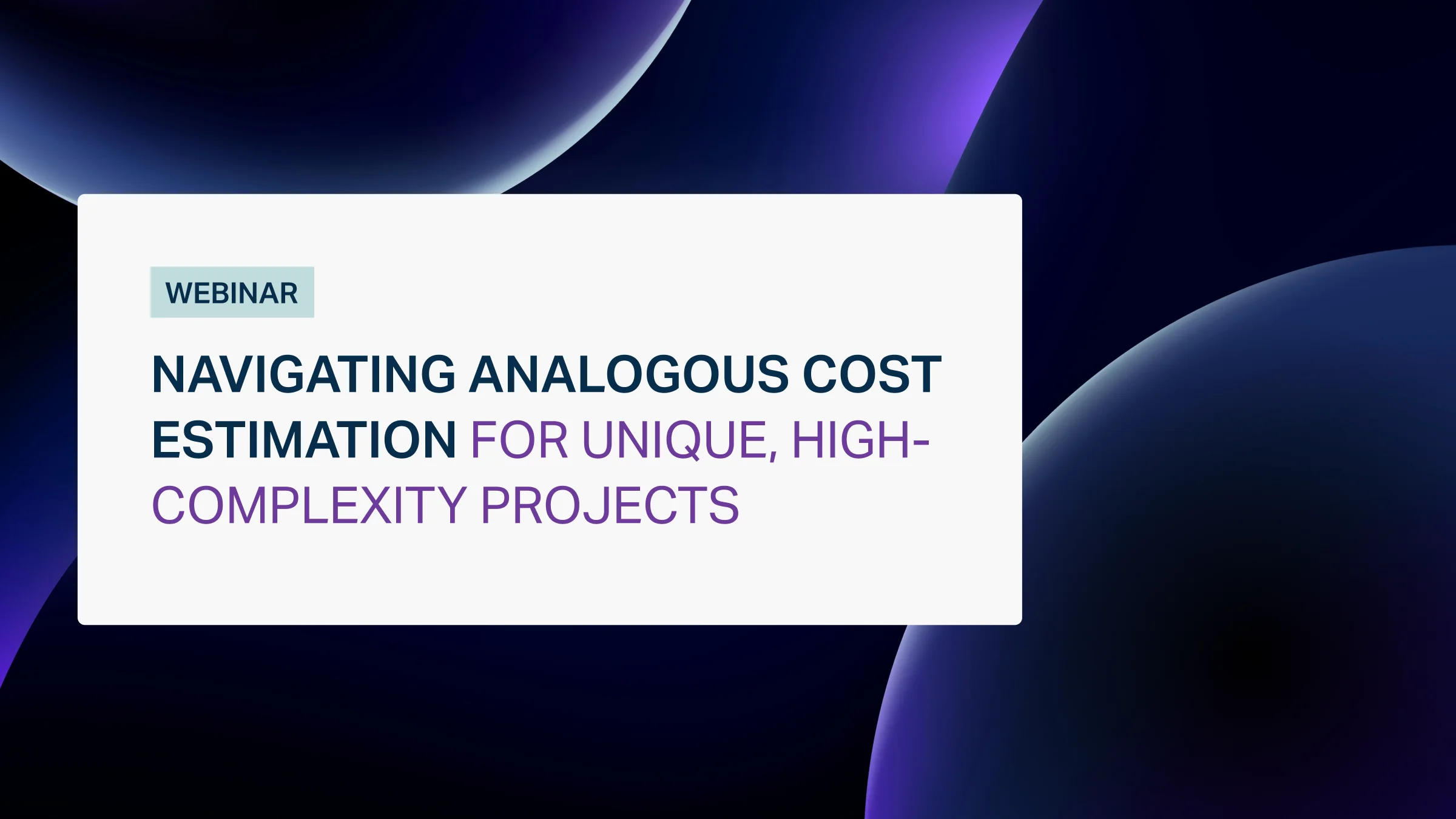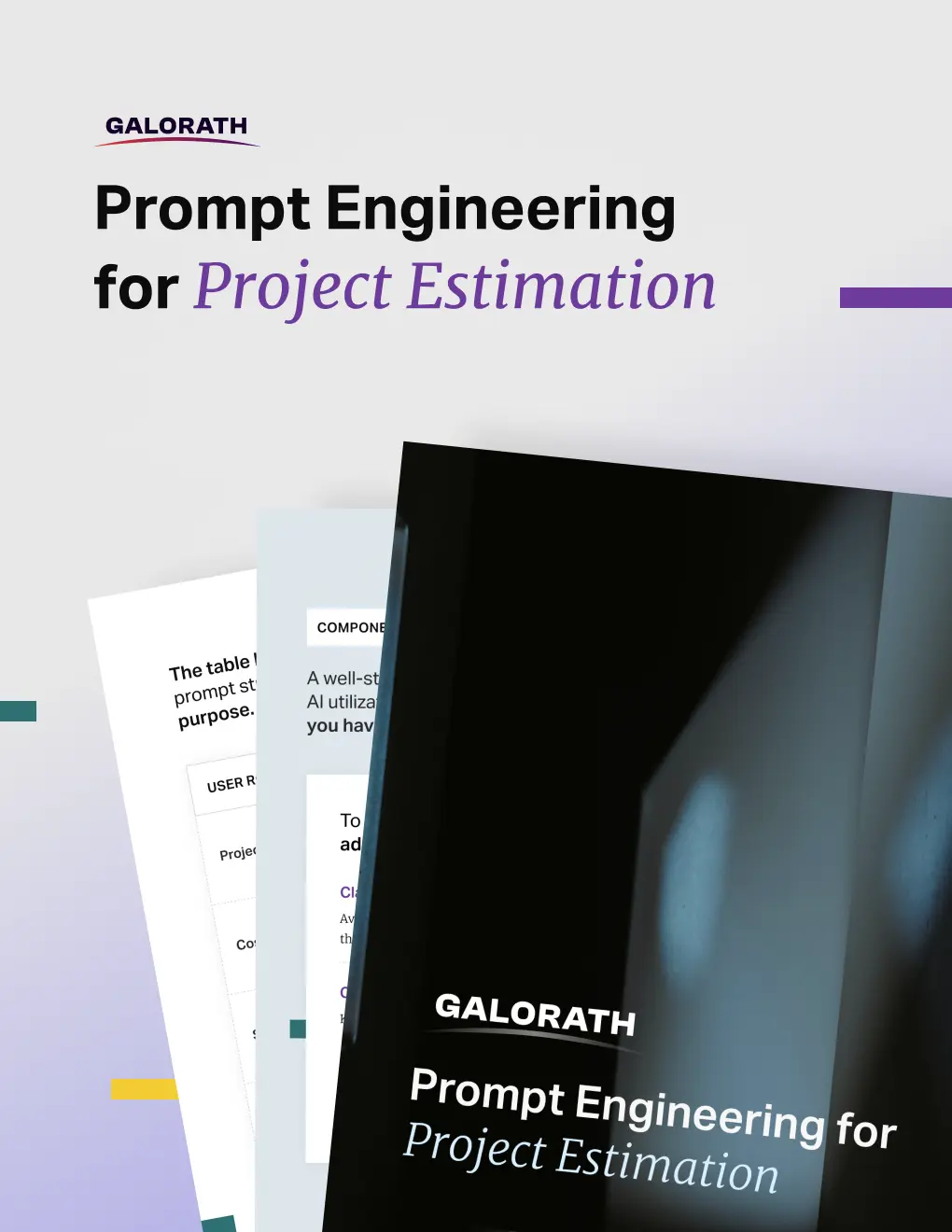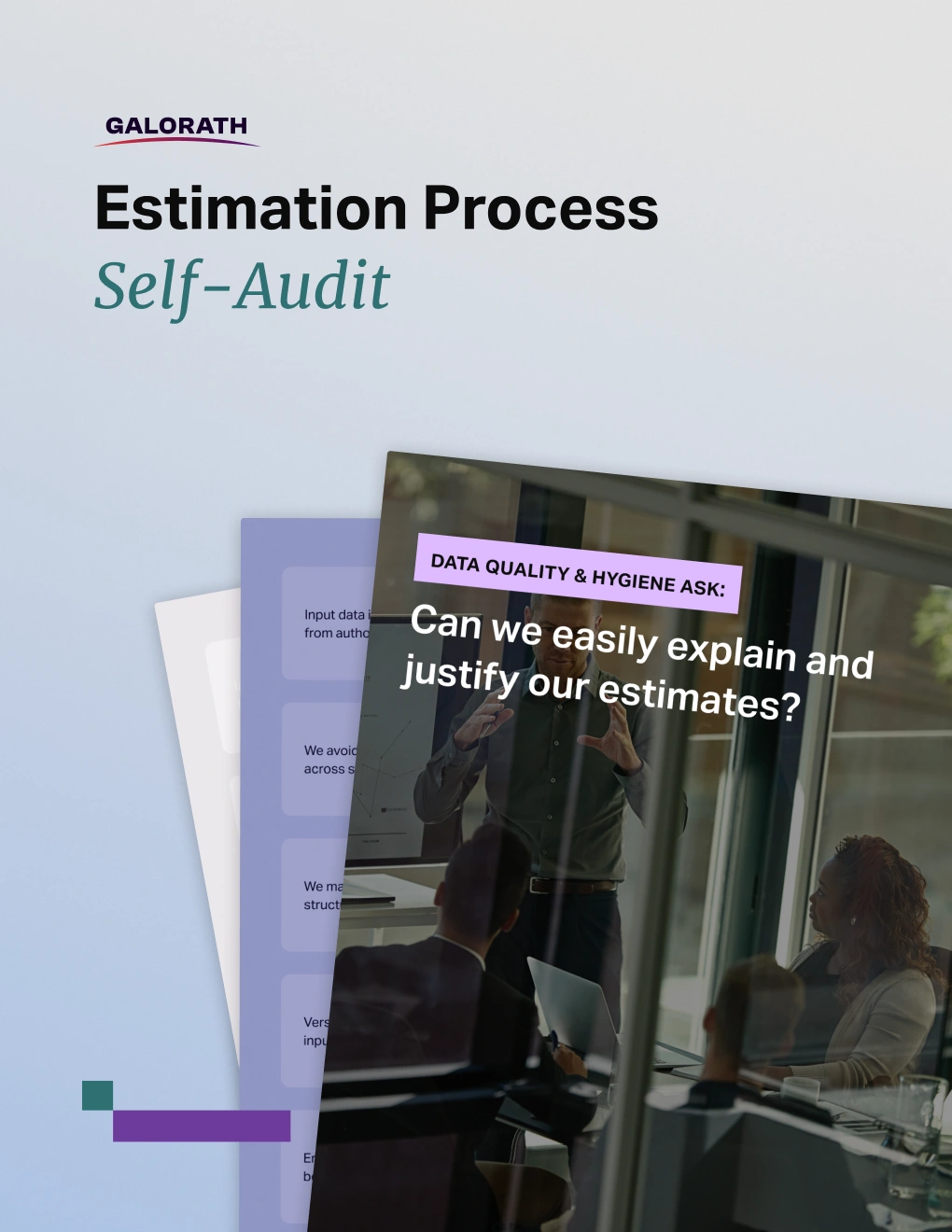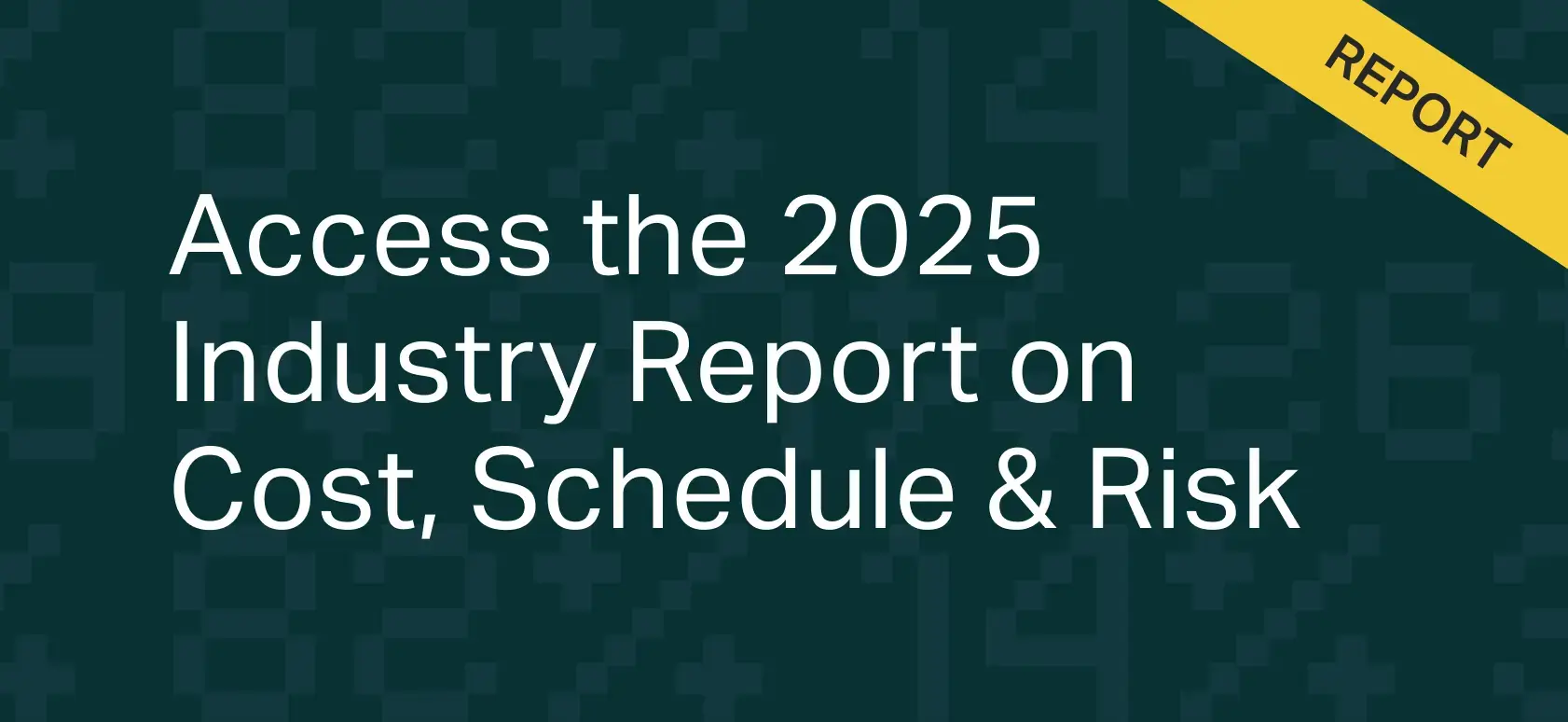Mastering Cost Risk with the CRED Model: A New Approach to Managing Uncertainty
A cost baseline is the approved, time-phased budget crucial for measuring, monitoring, and controlling project cost performance throughout its lifecycle. This baseline serves as a vital benchmark, enabling proactive management to identify variances, prevent cost overruns, and align project expenditures with strategic objectives.
In defense acquisition, aerospace missions, and government-funded programs, cost baselines are more than planning tools-they are regulatory requirements and decision-making instruments. Established under frameworks such as DoDI 5000.73, NASA CEH 4.0, and the GAO Cost Estimating Guide, baselines guide financial accountability, contract structuring, and lifecycle performance tracking.
This article examines the core definition, components, and creation process of cost baselines, along with the methodologies, standards, and digital engineering tools used to validate and manage them. Special attention is given to parametric modeling, Monte Carlo analysis, and risk-informed reserve planning in high-complexity programs.
What Is a Cost Baseline in Project Management?
A cost baseline is the approved, time-phased budget that defines the planned cost of project execution, excluding management reserves, and serves as the standard for measuring and controlling financial performance throughout the project lifecycle. This cost baseline definition is critical for project cost measurement and budget control.
In project management, the cost baseline is one of three project baselines, alongside the scope baseline and the schedule baseline, that collectively form the Performance Measurement Baseline (PMB) (PMBOK 7th Edition). It is typically derived by aggregating the cost estimates of work packages, mapped to the Work Breakdown Structure (WBS), and phased over time according to the project schedule. This integrated approach ensures comprehensive project performance measurement across all dimensions.
Unlike the broader project budget, which typically includes management reserves for unforeseen risks, the cost baseline focuses strictly on the authorized scope of work. It explicitly excludes management reserves, which are held by program leadership to address “unknown unknowns”.
The cost baseline aligns cost estimates to the WBS and integrates with the project schedule to track Planned Value (PV) against Actual Costs (AC) and Earned Value (EV). This integration enables early variance detection, accurate forecasting, and robust formal change control processes. Once established, it becomes a locked reference point: any changes require approval through defined governance workflows. For regulated environments, maintaining this distinction is crucial for auditability and compliance.
What Is the Difference Between Cost Baseline and Project Budget?
The main difference between cost baseline and project budget is that the cost baseline is a time-phased budget excluding management reserves (MR) used for performance measurement, while the project budget is the total approved funding that includes both the performance measurement baseline (PMB) and management reserves. According to the PMI PMBOK Guide, management reserves typically constitute 5-10% of the total project budget.
Separating these is crucial in regulated environments to maintain auditability, ensure traceability of reserve usage, and enable effective cost variance analysis.
Why Is the Cost Baseline Important for Projects?
The cost baseline is important for projects because it provides a structured benchmark for financial accountability, enabling project teams to monitor cost performance, identify variances early, and make informed decisions to control spending. Without a cost baseline, projects cannot track financial health or defend cost-related decisions.
In regulated industries like aerospace and defense, cost baselines are more than best practice-they are mandated by policies such as DoDI 5000.73, NASA CEH 4.0, and the GAO Cost Estimating Guide. These baselines support compliance, reinforce risk management, and align program expenditures with stakeholder expectations.
Through integration with Earned Value Management Systems (EVMS), the baseline enables proactive forecasting (via EAC, VAC) and corrective action when Cost Performance Index (CPI) or Cost Variance (CV) signals indicate drift.
When Is the Cost Baseline Created?
The cost baseline is developed during the planning phase, after the scope and schedule are defined and cost estimates are finalized, but before project execution begins. It must be approved by governance authorities and becomes the financial benchmark against which all future performance is measured.
In typical project lifecycles, the cost baseline is established just before a major decision gate or milestone (e.g., Milestone B in DoD programs or Key Decision Point C in NASA initiatives). It is not static – re-baselining may occur with formal justification during major project changes.
Who Creates the Cost Baseline?
Cost Baselines are usually created by cost estimators, project managers, engineering leads, financial analysts and contracting specialists.
In this table we can see an overview of the roles which create the cost baselines and their responsibilities:
| Role | Responsibility |
| Cost Estimators | Develop cost models using bottom-up, analogy, or parametric methods |
| Project Managers | Integrate cost, scope, and schedule; lead baseline approval process |
| Engineering Leads | Validate technical assumptions and work package breakdown |
| Financial Analysts | Ensure funding profiles match baseline phasing |
| Contracting & Procurement Specialists | Confirm obligations, vendor rates, and external risks |
| Oversight Bodies (DCAPE, CAIG, NASA ICAT) | Review baseline realism and provide Independent Cost Estimates (ICEs) when required |
What are the Key Milestones for Cost Baseline Creation in Regulated Programs?
In regulated environments like DoD acquisition and NASA initiatives, cost baseline creation aligns with specific project lifecycle milestones, ensuring formal approval and robust financial oversight before major execution phases begin.
How is Cost Baseline Timed in Regulated Programs:
| Phase | Event | Baseline Activity |
| Planning | WBS and schedule completed | Cost estimates developed and reviewed |
| Pre-Execution | Milestone B or KDP-C | Cost baseline finalized and approved |
| Execution | Authorized work begins | Baseline used to monitor EVM metrics |
| Re-baseline (if needed) | Major scope/cost change | Formal re-baselining process initiated |
The cost baseline is a collaborative output created before execution and rooted in validated scope, schedule, and cost data. Its approval marks a critical point in the project lifecycle-establishing not only a budget reference but also a regulatory anchor for performance and accountability.
What’s Included in the Cost Baseline? (Components and Structure)
The cost baseline includes all authorized, time-phased project costs associated with the execution of a defined scope, excluding management reserves. It serves as the financial blueprint for what work will be performed, when, and at what cost, enabling variance analysis, funding control, and Earned Value Management (EVM).
Key Components of a Cost Baseline
| Component | Description |
| Direct Costs | Labor, materials, equipment, and services directly tied to WBS elements |
| Indirect Costs | Overhead, fringe, G&A, and burdened rates allocated to the project |
| Contingency | Allocated reserves for known, quantifiable risks (included in the baseline) |
| Work Package Costs | Time-phased cost estimates rolled up from control accounts and activities |
| Resource Loading | Cost distribution aligned with the project calendar and task durations |
| Schedule Integration | Costs aligned to scheduled activities, enabling PV, EV, and AC tracking |
| Authorized Scope Only | No scope creep; only contracted or approved scope is included |
| Excludes Management Reserve | Funds for unknown-unknowns held outside the baseline |
The structure of a cost baseline follows the Work Breakdown Structure (WBS) and is typically aligned with the Integrated Master Schedule (IMS). It includes detailed estimates for labor, materials, overhead, subcontractor costs, and known risks (captured as contingency). Management reserves, which are held outside the baseline for unknowns, are not included.
What’s Not Included in the Cost Baseline?
- Management Reserves (Held by PM for unknown risks)
- Profit or Fee (Incentive structures tracked separately)
- Unauthorized or Unfunded Work (Scope creep, future change requests)
- Owner-Furnished Equipment (Unless costed into project scope)
The cost baseline is composed of all known, approved costs needed to complete the defined project scope, broken down by work package, aligned to the schedule, and integrated into control systems. Excluding management reserves ensures that the baseline remains a fixed, auditable benchmark for cost performance measurement.
Cost Baseline Structure: Hierarchical Alignment
Understanding a project’s financial organization is crucial for effective control. This infographic illustrates how the cost baseline is structured, breaking down project scope into manageable, costed elements through a clear hierarchical alignment.
All components are documented within the Performance Measurement Baseline (PMB) and feed directly into EVM systems for real-time cost performance tracking.
How to Create a Cost Baseline for a Project?
Creating a cost baseline involves a structured, multi-step process that transforms project scope and technical requirements into a time-phased budget approved for performance measurement. The process must align with the project schedule, risk profile, and regulatory obligations, particularly in defense, aerospace, and federally funded programs.
Each step should produce traceable documentation, feed into financial control systems, and prepare the cost data for integration with Earned Value Management Systems (EVMS) or equivalent performance frameworks.
1. Define the Project Scope and Work Breakdown Structure (WBS)
The first step in building a cost baseline is defining the project scope and decomposing it into a Work Breakdown Structure (WBS). The WBS is a hierarchical framework that organizes all deliverables and work packages. Cost estimates are developed at the WBS element level, allowing for traceability and alignment with project objectives.
- Break the project scope into control accounts and work packages.
- Ensure each WBS element has a clear scope, deliverable, and completion criteria.
- Use MIL-STD-881D (DoD) or NASA NPR 7120.5-compliant templates for government programs.
2. Estimate Costs at the Work Package Level
With the WBS in place, the next step is to generate cost estimates for each work package. The method depends on data maturity, but best practice calls for a combination of bottom-up detail and validated historical analogs. When available, parametric models (like SEER or PRICE) can add statistical rigor.
Inputs typically include labor hours, material quantities, subcontractor quotes, and indirect rates. Each estimate must be traceable and justifiable – not just to project leadership, but also to external stakeholders like CAPE, GAO, or NASA ICAT teams.
3. Align Costs with the Project Schedule (Time-Phasing)
A baseline isn’t just a number – it’s a timeline. Each cost must be mapped against project activities using a time-phased distribution that aligns with the Integrated Master Schedule (IMS).
This step transforms raw estimates into Planned Value (PV) curves used in Earned Value Management Systems (EVMS). Without this integration, it’s impossible to calculate variance metrics like Cost Performance Index (CPI) or perform funding obligation forecasting.
4. Add Risk-Based Contingency Reserves
Known risks are analyzed using quantitative risk methods, and contingency reserves are added accordingly. This reserve is included in the baseline and accounts for expected, defined risks.
- Perform Monte Carlo simulations, sensitivity analyses, or probabilistic modeling.
- Set contingency at appropriate confidence levels (e.g., 50th or 70th percentile).
- Document assumptions and risk matrices in a Cost Risk Analysis Report (CRAR).
5. Exclude Management Reserves
Management Reserve (MR) is not part of the cost baseline. It exists as a separate, controlled fund held by program leadership to address unforeseen work or risks not previously identified. Including MR within the Performance Measurement Baseline (PMB) violates EIA-748 standards and leads to compliance failures during DCMA or GAO audits.
Proper baseline development always delineates between budgeted work (baseline) and unknown unknowns (MR).
6. Conduct Peer Review and Independent Validation
Independent reviews ensure that assumptions are realistic and estimation methods are valid. This is a required step in federal programs before major decision points.
- Conduct internal technical and cost peer reviews.
- Submit the estimate for Independent Cost Estimate (ICE) or Independent Cost Assessment (ICA).
- Validate estimates against historical benchmarks and statistical models.
7. Obtain Formal Approval and Freeze the Baseline
The cost baseline must be reviewed and approved by governance bodies such as Program Executive Offices (PEOs), Mission Directorates (NASA), or acquisition executives.
- Submit baseline documentation for Milestone B, KDP-C, or Critical Decision reviews.
- Once approved, the baseline becomes the PMB and is locked for tracking.
- Any future changes require formal change control procedures.
8. Integrate with Financial and EVMS Tools
Finally, the cost baseline must be loaded into project management systems for tracking and reporting.
- Enter the baseline into EVMS software or cost control tools.
- Generate control account plans and variance thresholds.
- Configure reporting tools for CPI, SPI, EAC, and VAC metrics.
What are the common Pitfalls in Cost Baseline Development?
The most frequent cost baseline errors stem from misaligned scope, unrealistic assumptions, and the omission of risk-based contingency. These common cost baseline mistakes lead to persistent challenges in program management, with 70% of organizations reporting difficulty in accurately estimating project costs, according to the latest State of Industry Report done by Galorath.
Cost underestimation is widespread, often caused by optimism bias or reliance on immature technical data. According to Flyvbjerg & Bester (2021), this issue is systemic in large infrastructure and aerospace programs.
Equally damaging is the exclusion of probabilistic risk, where contingency is either arbitrarily set or omitted entirely, exposing the program to unplanned financial shocks.
Lack of stakeholder alignment is another silent failure. When key contributors (e.g., control account managers, estimators, procurement staff) are excluded from the baseline formation, assumptions remain unvetted and support for the budget weakens.
This infographic illustrates the critical pitfalls to avoid for a more robust and reliable financial plan:
How to Manage and Adapt the Cost Baseline?
Managing a cost baseline is a disciplined process of monitoring, adapting, and maintaining alignment with project realities and changes. This is particularly challenging in today’s complex landscape, where cost and schedule overruns remain the top challenge for government programs, impacting 61% of projects according to our 2025 State of the Industry Report.
The project baseline can change, but only through formal change control processes, typically when major scope, schedule, or cost changes require an update to reflect revised expectations, ensuring disciplined budget management. This process is called re-baselining and it is a critical, controlled procedure, not a casual adjustment.
Re-Baselining: When and How to Do It Properly?
The re-baselining is generally necessitated by approved changes that significantly impact the original plan, such as large scope changes, material schedule changes, or the introduction of substantial new information or risks that alter the project’s overall financial posture.
In complex projects and novel projects, where assumptions and requirements evolve, periodic revisions are especially important to maintain baseline accuracy, according to Taylor. Re-baselining occurs under formal change control processes after formal justification and impact analysis. It is not done lightly, as the baseline serves as a fixed, auditable benchmark. This ensures that the approved time-phased budget remains a reliable performance measurement reference and upholds project managers accountability, particularly in defense acquisition and government projects where strict adherence to financial mandates is critical.
Key Conditions for Re-Baselining:
- Significant Scope Changes: Approved modifications to project deliverables or requirements that materially affect cost.
- Major Schedule Changes: Delays or accelerations that significantly alter the time-phasing of costs.
- Unforeseen Events: Impacts of identified high-magnitude risks or external factors that exceed contingency.
- Fundamental Assumptions Proving False: If a core premise of the original estimate is invalidated.
Key Steps:
- Document justification and link to contractual triggers
- Update WBS, estimates, and schedule time-phasing
- Run updated risk and confidence-level analyses (e.g. JCL)
- Seek governance approval (e.g., DCMA, MDA, KDP-C)
- Communicate the revised baseline to all impacted parties
What Is the Role of the Cost Baseline in Controlling Project Costs?
The cost baseline serves as the official reference for tracking and managing project expenditures, enabling proactive control and budget accountability.
It underpins Earned Value Management (EVM), allowing direct comparisons between Planned Value (PV), Earned Value (EV), and Actual Cost (AC) across the lifecycle. Deviations from the baseline trigger variance analysis and guide corrective actions.
| Function | How It Supports Cost Control |
| Performance tracking | Time-phased comparisons of actual vs. planned cost |
| Variance identification | Enables rapid corrective actions and budget realignment |
| Forecasting support | Updates Estimate at Completion (EAC) using trend data |
How to Use the Cost Baseline to Avoid Cost Overruns?
A well-maintained cost baseline allows for early warning, fast variance resolution, and precise control of budget drift, which then prevents the cost overruns to happen.
Avoiding overruns starts with statistically grounded estimates. Incorporating Monte Carlo simulations, confidence levels (e.g., P70), and risk-adjusted reserves makes the cost baseline more resilient.
Once the baseline is active, real-time monitoring ensures that deviations are caught early. This includes continuous cost/schedule integration, trend analysis, and quarterly estimate reviews.
| Best Practices | Why It Works |
| Monte Carlo-based contingency | Accurately reflects exposure to cost risk |
| Independent QA of estimates | Validates underlying assumptions and estimation rigor |
| Governance integration | Increases accountability and visibility into emerging risks |
What Is the Role of Cost Baselines in Risk and Decision Making?
The cost baseline enables financial risk quantification and supports transparent, data-driven decision-making across program milestones. In risk terms, cost baseline serves as the “expected value” from which uncertainty is measured. That enables more meaningful sensitivity tests, scenario modeling, and risk treatment strategies.
For decision making, the baseline supports comparative analysis – whether in trade-offs, performance optimization, or portfolio allocation.
| Decision Area | How the Cost Baseline Helps |
| Quantifying exposure | Clarifies budget at risk, especially for complex technical efforts |
| Contingency planning | Guides size/location of reserves across control accounts |
| Trade-off analysis | Supports cost-benefit comparisons between competing alternatives |
| Trust building | Ensures transparency across oversight bodies and leadership chains |
Communicating Baseline Changes to Stakeholders
Effective communication of cost baseline changes is paramount for maintaining transparency, securing stakeholder buy-in, and ensuring continued financial accountability, particularly in publicly funded or oversight-heavy defense and government programs.
Any adjustment to the approved time-phased budget, typically enacted through a formal change control process, necessitates clear, verifiable communication. Project teams employ structured reporting artifacts, such as change logs, updated cost curves (including S-curve updates), and variance dashboards, to transparently present what changed, why, and what the implications are.
This communication extends beyond mere procedure; it profoundly impacts organizational reputation. Defense programs that miscommunicate baseline changes frequently experience funding delays, oversight pushback, or systemic programmatic distrust.
Effective tools include:
- Visual cost profiles (S-curve updates)
- Variance reports with Earned Value metrics
- Change justification memos aligned with WBS revisions
- Recorded stakeholder briefings and PMB audit trails
Cost Baseline in Practice
The cost baseline, in practice, serves as the critical financial blueprint for project execution, distinguishing planned performance from total budget, outlining clear benefits, and being supported by specific tools and terminology essential for complex programs. Effective use of these baselines is increasingly vital as program complexity and uncertainty continue to rise, demanding more sophisticated cost estimation platforms and data analytics, according to the 2025 SOTI report by Galorath.
What Are the Key Benefits of Using a Cost Baseline?
A properly implemented cost baseline delivers five critical benefits: performance measurement, variance detection, forecasting capability, regulatory compliance, and data-driven decision support.
In more details, using a cost baseline:
- Enables real-time cost tracking against planned expenditures across all work packages and control accounts.
- Provides early warning signals through earned value metrics (CPI, SPI) when projects deviate from plans.
- Supports accurate forecasting of final costs using EAC and ETC calculations based on performance trends.
- Ensures regulatory compliance with DoD, NASA, and government program management requirements.
- Facilitates risk-responsive planning by quantifying cost impacts of identified project risks.
Cost Baseline Example (Aerospace or DoD program walk-through)
In defense and aerospace projects, a cost baseline is built using structured estimation, risk analysis, and phased budgeting tied to the Work Breakdown Structure (WBS). Below is a practical example modeled on a mid-tier DoD satellite development program.
Scenario: Tactical Satellite System – DoD Program
- Total Budget: $220 million
- Cost Baseline (PMB): $198 million
- Management Reserve (MR): $22 million (excluded from baseline)
- Duration: 36 months
- Tools Used: SEER-H (parametric modeling), Monte Carlo risk analysis
Structure:
- WBS Level 2: Payload, Bus, Ground Control, Launch
- Estimation: Bottom-up + parametric CERs
- Phasing: Costs distributed monthly; design front-loaded, integration and testing in the final third
- Risk Adjustment: P70 Joint Confidence Level target
Tracking Performance (Example at Month 12):
- Planned Value (PV): $80M
- Earned Value (EV): $72M
- Actual Cost (AC): $86M
- Cost Performance Index (CPI): 0.84 → Cost overrun detected
Action Taken: The variance triggered a formal re-baseline review. Using SEER, cost engineers adjusted control account forecasts and updated contingency allocations.
What Are the Most Common Tools for Creating a Cost Baseline?
Creating an accurate, defensible cost baseline requires the integration of cost estimation, scheduling, and performance management tools, each tailored to the project’s size, complexity, and regulatory environment.
Core Cost Baseline Tools and Their Functions:
| Tool | Primary Function | Ideal Use Cases |
| SEER | Parametric cost modeling, Monte Carlo simulation, scenario analysis | Aerospace, defense, digital engineering, high-risk R&D |
| Deltek Cobra | Earned Value Management (EVM), time-phased baseline control, variance tracking | Government programs, defense acquisition, PMB monitoring |
| Primavera P6 | Schedule-cost integration, time-phasing, critical path analysis | Large-scale infrastructure, multi-year programs |
| Microsoft Project | WBS structuring, cost loading, light EVM functionality | Mid-size commercial projects, early-phase planning |
| RiskyProject / @Risk | Probabilistic risk modeling, Joint Confidence Level (JCL) analysis | Contingency sizing, complex scenario simulations |
| Excel with Macros / VBA | Custom cost sheets, manual baselines, export-ready templates | Early-stage projects, quick-turnaround estimates |
Why These Tools Matter:
- Parametric Estimators (like SEER):
SEER helps establish the initial baseline by translating technical inputs (e.g., software lines of code, aircraft subsystem weight, propulsion type) into statistically backed, time-phased cost outputs. These are especially vital in defense acquisition, where historical analogs and CER (Cost Estimating Relationships) drive credibility. - Schedule-Driven Systems (Primavera P6):
Primavera P6 aligns time-phased cost elements with the Integrated Master Schedule (IMS), enabling precise Earned Value (EV) tracking. - EVM Platforms (Deltek Cobra):
Once the cost baseline is created, Cobra manages the Performance Measurement Baseline (PMB), integrates with EVM reporting, and facilitates continuous comparison between Actual Cost (AC), Earned Value (EV), and Planned Value (PV). - Simulation Engines (Monte Carlo / Risk Tools):
These tools are used during baseline development to identify probabilistic risk exposure, calculate JCL (Joint Confidence Levels), and inform risk-based contingency sizing-a common requirement in programs governed by NASA CEH 4.0 or DoDI 5000.73.
How Does SEER Help with Creating a Cost Baseline?
SEER supports cost baseline development by generating statistically defensible estimates, integrating risk-adjusted simulations, and exporting WBS-aligned outputs for EVMS compliance.
Key Capabilities:
- Automates Baseline Generation
Converts technical parameters (e.g., lines of code, mass, complexity) into structured, time-phased cost estimates aligned with the Work Breakdown Structure (WBS). - Supports Risk-Informed Planning
Integrates Monte Carlo simulations and sensitivity analysis to support Joint Confidence Level (JCL) targeting and contingency sizing. - Feeds EVM Systems
Exports formatted cost data directly into Earned Value tools like Deltek Cobra or Microsoft Project, maintaining alignment with the Performance Measurement Baseline (PMB). - Reduces Rework
Programs using SEER report fewer re-baselining events due to high front-end estimation accuracy and early risk integration.
SEER embeds statistical defensibility and traceability into the cost estimation process, strengthening both baseline integrity and long-term cost control-particularly vital in defense, aerospace, and R&D-driven programs.
How Are Cost Baselines Used in Defense and Space Programs?
In defense and space programs, cost baselines serve as contractual, regulatory, and technical benchmarks that define funding, performance expectations, and compliance obligations throughout the acquisition lifecycle. Unlike commercial project baselines, these are legally enforceable artifacts reviewed by oversight bodies and directly tied to federal cost accountability standards.
Cost baselines in these programs are used to authorize funding at major milestone reviews (e.g., DoD Milestone B, NASA KDP-C), measure Earned Value for performance-based contracts, and support external audits from agencies like GAO, CAPE, and NASA Independent Program Assessment Offices.
They also guide decisions around cost realism, should-cost analysis, and reserve sufficiency, particularly when Joint Confidence Level (JCL) modeling or Independent Cost Estimates (ICE) are required by law.
Applications in Defense and Aerospace Programs
| Use Case | Function |
| Milestone Reviews | Baseline must be approved at Milestone B (DoD) or KDP-C (NASA) to authorize funding |
| Earned Value Management | Baseline becomes part of the PMB and is used to track CPI, CV, EAC |
| Contract Performance Monitoring | Contractors’ actuals compared to baseline; used for award fee determinations |
| Re-baselining Events | Formal updates triggered by major changes in scope, budget, or schedule |
| Budget Submission & Oversight | Baseline data used in CAPE ICEs, OSD cost assessments, and congressional justifications |
| Reserve Analysis | Baseline underpins JCL reviews to validate contingency sufficiency (e.g., P70 reserve modeling) |
Key Oversight and Compliance Drivers
| Regulatory Entity | Baseline Role |
| DoD CAPE (DCAPE) | Validates program cost realism via ICE against program baseline |
| GAO | Uses baseline to assess cost growth and adherence to 12-step estimating process |
| NASA | Requires cost baseline for JCL calculation; enforces at KDP reviews |
| OMB/AACE/ICEAA | Reference baseline methodology for major capital acquisition reviews |
| FAR/DFARS | Establish allowable cost criteria against baseline control accounts |
Real-World Examples
- F-35 Joint Strike Fighter: Re-baselined multiple times to reflect scope, cost, and schedule revisions after GAO and CAPE intervention
- KC-46 Tanker Program: $7B in overruns attributed partly to baseline deficiencies under fixed-price development
- NASA Artemis/SLS: Baseline cost increases prompted JCL reassessments and Congressional notifications
- Sentinel ICBM: Program baseline tied to EVM metrics and CAPE Independent Cost Assessment for Milestone B certification
Why It Matters:
- For Contractors: The cost baseline determines performance payment structures, cost growth risk, and contract enforceability
- For Program Managers: It’s a tool to defend budgets, justify resource needs, and manage scope within cost targets
- For Oversight Bodies: It enables objective assessment of affordability, realism, and execution feasibility
In defense and space acquisition, the cost baseline isn’t just a project control tool. It’s a statutory reference point that integrates financial planning, technical risk, and policy compliance. Misalignment between actual costs and the approved baseline can trigger rebaselining, reprogramming, and (in extreme cases) program cancellation or Congressional scrutiny.
Frequently Asked Questions About Cost Baseline
Does the cost baseline change over time?
Yes, but only through a formal change control process. A cost baseline is initially fixed during the planning phase but may be updated (re-baselined) if there are significant scope, schedule, or cost changes. For example, in defense acquisition programs, a shift in requirements or funding authorization may trigger a re-baseline after a documented impact analysis.
What’s the difference between a cost baseline and a cost estimate?
A cost estimate is a preliminary projection of expected expenditures, often developed during early planning or feasibility, while a cost baseline, by contrast, is the approved, time-phased budget based on refined estimates and officially authorized for project execution. Only the baseline serves as the reference for Earned Value Management (EVM) and performance tracking.
How is a cost baseline different from a cost forecast?
The cost baseline is the original approved plan while the cost forecast is an evolving projection of final project cost, often represented as Estimate at Completion (EAC). Forecasts may deviate from the baseline due to performance trends, scope changes, or external factors. Both are used together in EVM to assess cost performance and predict overruns.
What’s the distinction between baseline cost and actual cost?
Main distinction between the two is that the baseline cost reflects what was planned to be spent at a specific point in time, while actual cost (ACWP) is the real, incurred expenditure. The comparison between the two is fundamental in EVM to calculate metrics like Cost Variance (CV) and Cost Performance Index (CPI).









